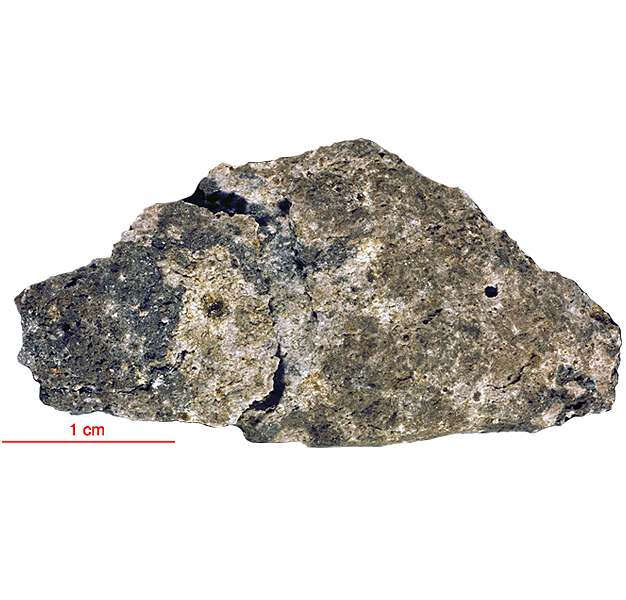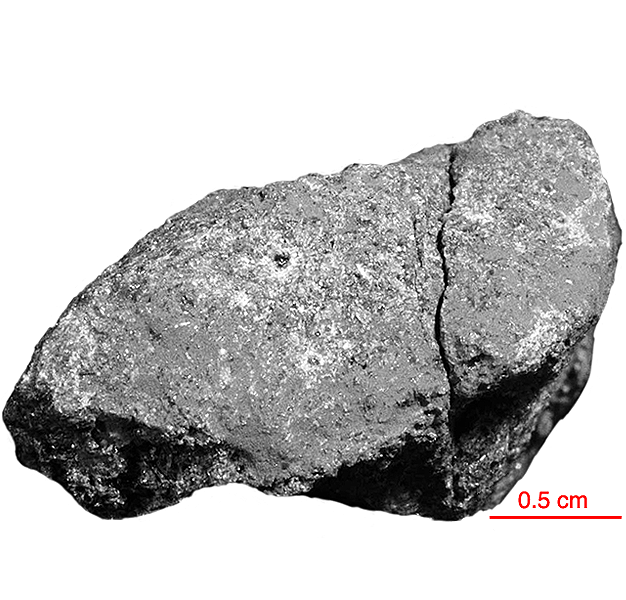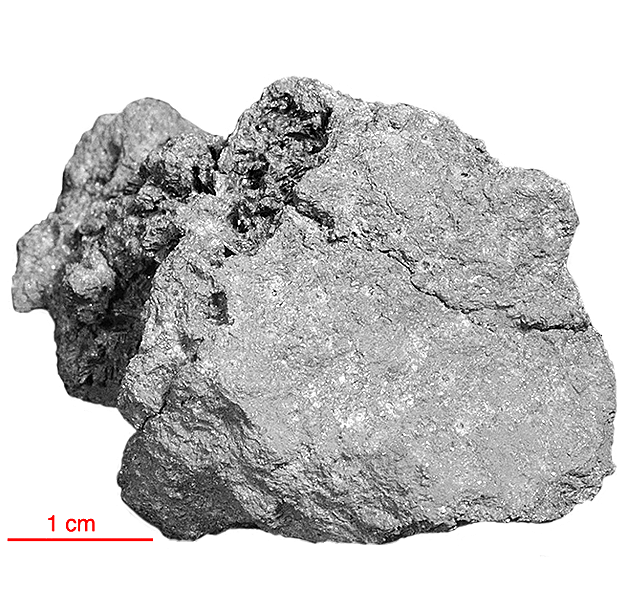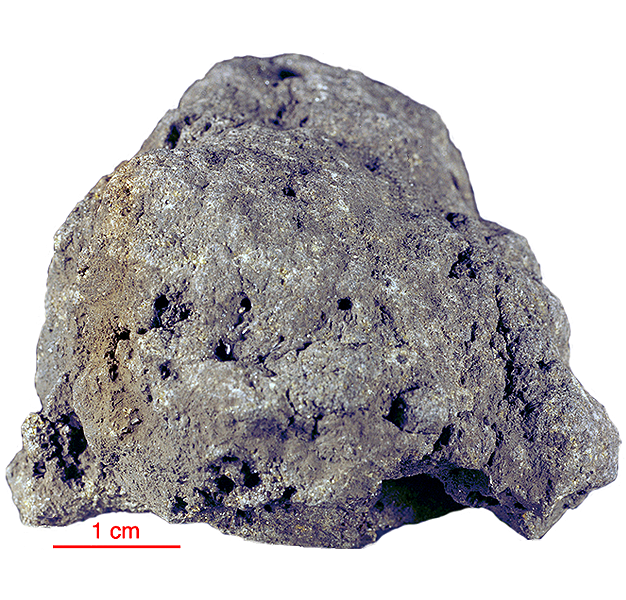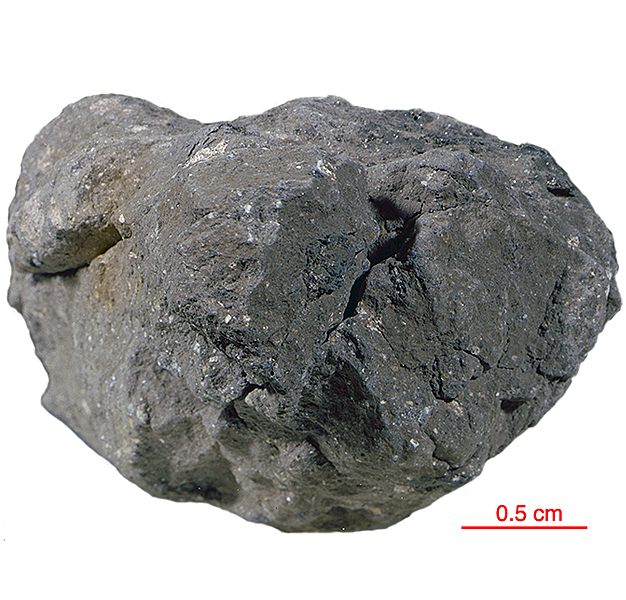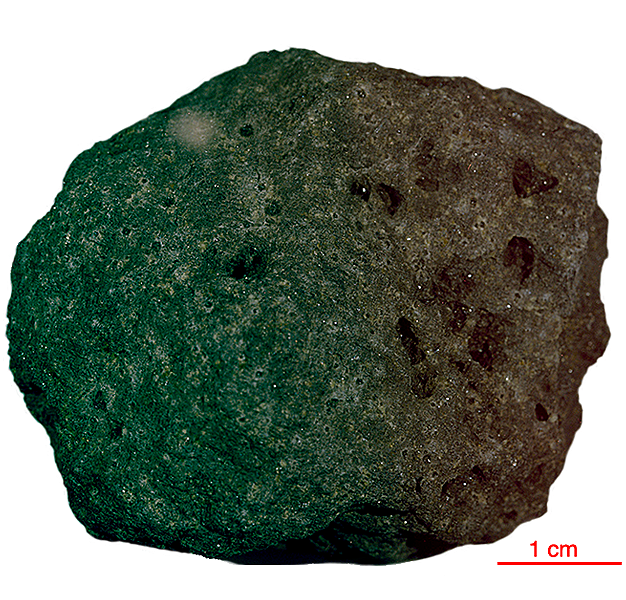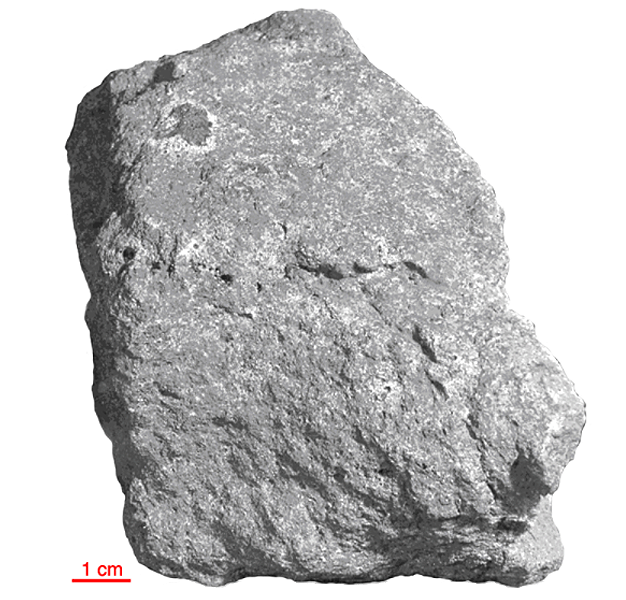
Fact sheet
12063 is the largest sample and has the highest ilmenite content of the Apollo 12 basalts. It is believed to have been collected at Bench Crater together with 12039. 12063 is a medium-grained porphyritic olivine, pyroxene basalt. Phenocrysts of rounded olivine (0.6 to 0.8 mm) and euhedral to subhedral pyroxene (0.3 to 1.5 mm) are set in a matrix of intergrown plagioclase, pyroxene and opaque minerals. Mesostasis fill intersticies between matrix minerals and consists of vermicular, perhaps eutectric intergrowths, of single clinopyroxene crystals and glass. Pigeonite and augite ophitically enclose laths of polysynthetically twinned plagioclase. Small amounts of fayalite, cristobalite, and glass are associated in areas interstitial to pyroxene and plagioclase. The opaque minerals consist predominantly of ilmenite with lesser amounts of spinels, troilite, mackinawite (?), FeNi metal and metallic Cu.
The sample weighed 2426 grams before analysis and is 3.30±0.13 billion years old (Rb-Sr).
Further details of this and other Apollo samples are here: http://curator.jsc.nasa.gov/lunar/
Apollo 12 returned 34 kilograms of samples, including 45 rocks, samples of lunar 'soil', and several core tubes that included material from as much as 40 centimetres below the lunar surface.
Apollo 12 rocks were almost all basalts, with only two breccias in the returned samples. The basalts at the Apollo 12 site formed 3.1 to 3.3 billion years ago, roughly 500 million years later than the Apollo 11 basalts. Overall, there is much less of the element titanium in the Apollo 12 samples than in the Apollo 11 samples, which explains the more reddish colour of this region. The differences in age and chemical composition between the Apollo 11 and Apollo 12 samples demonstrate that mare volcanism did not occur as a single, Moon-wide melting event.
Apollo 12 was launched on 14 November 1969.

